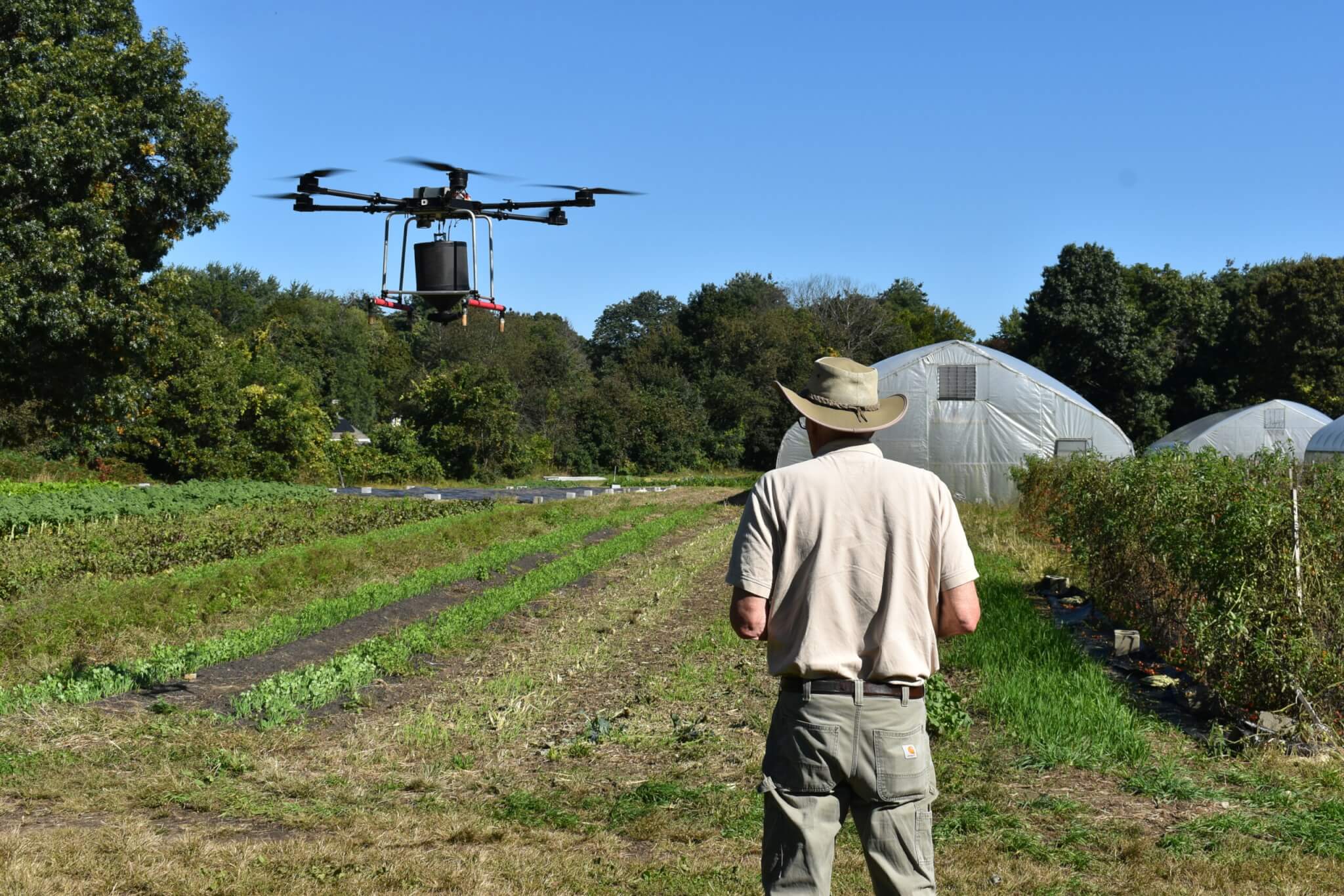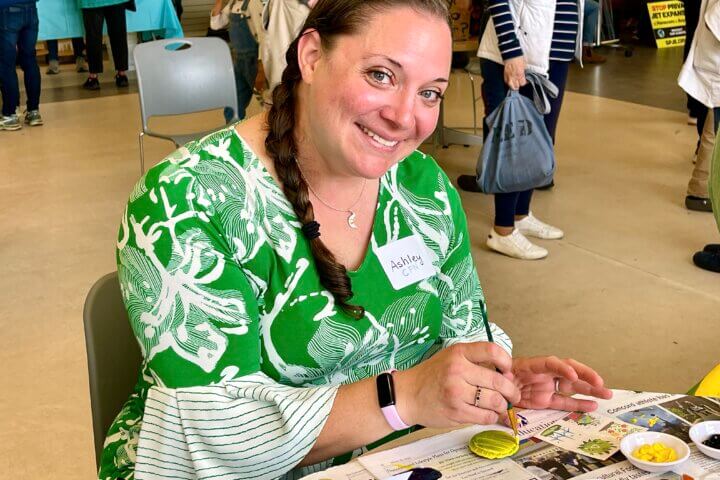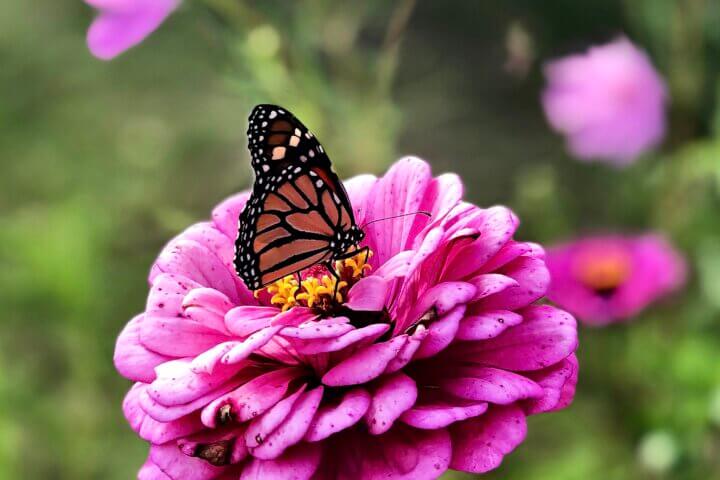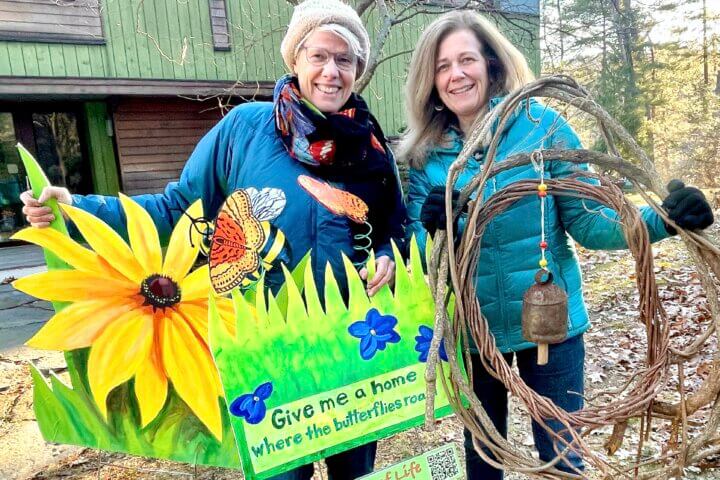In a faraway land, a long time ago, farmers spread cover crops over their fields, relying on plants to enrich the soil and minimize erosion. They did it in the Roman Empire. Until the 1950s, American farmers did too.
With the increased use of commercial fertilizer, machinery and larger farms, the sustainable practices almost disappeared.
Soils began to erode, plants suffered during droughts and new organic standards called for different measures: no fertilizer or herbicides and limited tilling, digging into the soil for weed control and planting.
Farmers began getting in sync with nature a bit more, planting a cover crop with seeds like clover, oats or peas among others in the fields, often before the main cash crop was removed.
Cover crops return nitrogen to the soil and, if planted at the right time, will die and become straw that can be used to plant the next season’s crop, said Elena Colman, who, with her husband Karl Goethert, operates Small Farm in Stow, where they grow crops year-round for sale.
Both grew up in Concord.
Spreading cover crops on their open-air fields was time consuming. Doing three rows took 30 minutes. They had 50 rows.
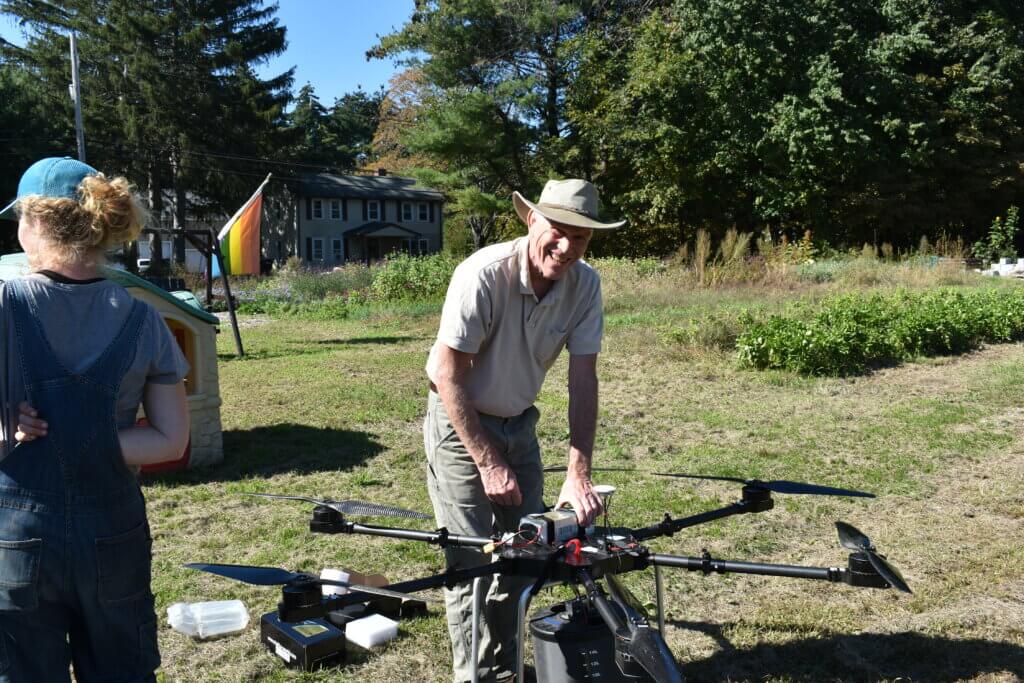
Her dad, John Colman, an aquatic geochemist who retired from the U.S. Geological Survey, flew over from his home in Concord with a battery-operated, high-tech rescue.
The scientist, who said he may be the only licensed drone seeding operator in New England, has put time, effort and money into morphing a six-blade drone into an aerial seeder.
A seed canister hanging from the drone, with its own battery, broadcasts the seed according to a plan generated by an app on his phone.
Liftoff is quiet. The six carbon-fiber blades power up, one after the other, and Colman, with great care for safety, sends the drone aloft to guide it around the perimeter of the field.
After the field’s boundaries are mapped in the app, in less time than it takes to seed three rows, the drone will fly back and forth across the field, spreading oats across empty rows and over, under and around standing crops like cherry tomatoes.
“My favorite part of the drone is that it knows exactly where it ran out of seeds. After getting refilled, it autopilots back to the point where it ran out and starts seeding again where it left off,” Elena Colman wrote in an email.
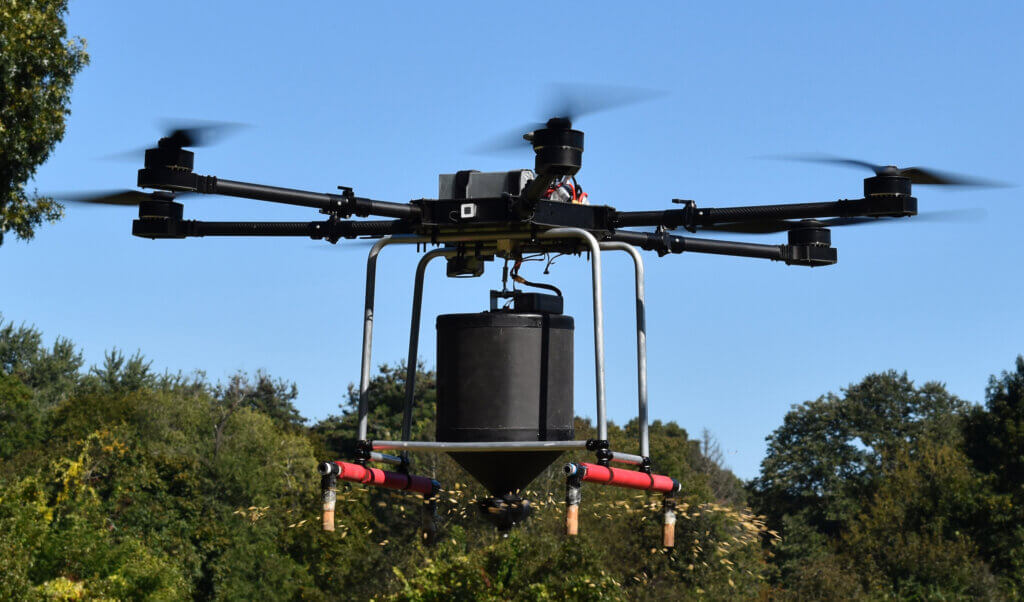
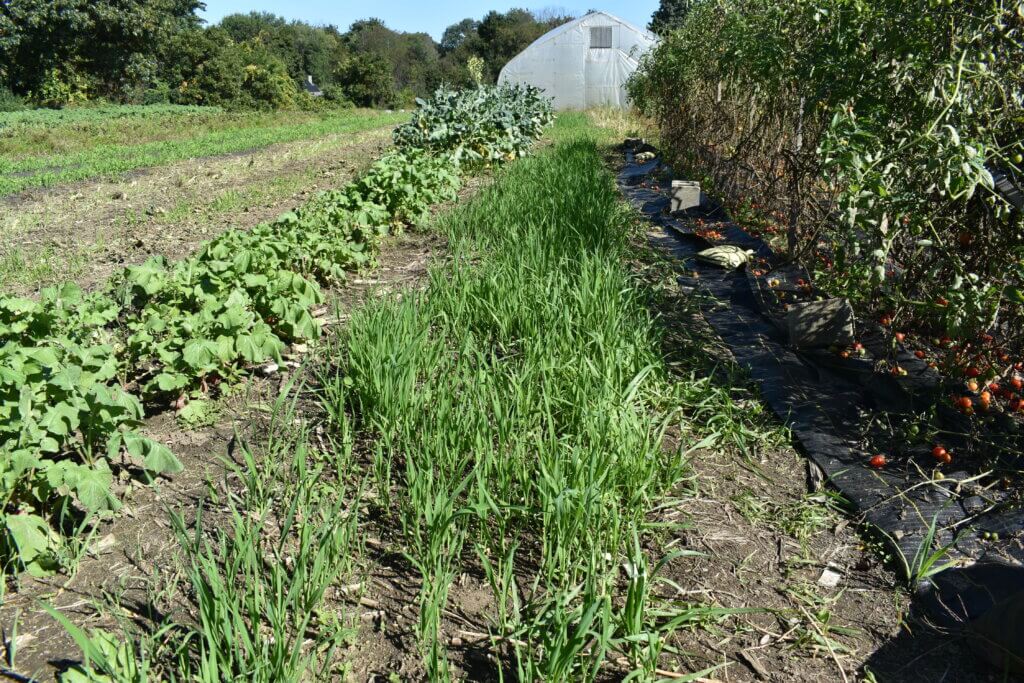
Colman is looking to take his business to the next level. He has the equipment, the ability and the license to fly his seeding drone. His customers will likely be bigger farms within driving distance.
The entrepreneur is hitting all the right notes for farmers and environmentalists. But he must let the right farmers know what he’s doing.
Hiring a drone is less expensive than hiring a fixed-wing plane to spread the crop. The carbon cost of running a battery-powered drone is negligible compared to a plane.
“Organic soybean and organic wheat farmers need my services and I need them,” he said. “We just have to find each other.”
For more information, visit covercropinnovations.com.


